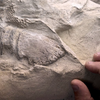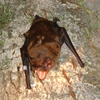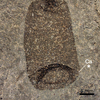Cool Things
Awesome Posts from the Mini Museum Library!
Featured Article
Is “Paul is Dead” Dead?: Unpacking One Of Pop Culture’s Most Enduring Conspiracy Theories

Researchers Recreate Dinosaur Sounds Using Bizarre Instrument!
Since the first discoveries of dinosaur fossils, much attention has been paid to their physical characteristics; what they looked like. Did they have feathers, scales or both? How did they walk, on two legs or four? So on and so forth. A recent project aims to shed light on another aspect of how dinosaurs were perceived - their sounds!

Learn About the Tiny Aircraft That Turn Sunlight Into Flight!
Of the five layers of Earth’s atmosphere, the mesosphere (the third layer from Earth’s surface) is a height at which traditional aircraft have, thus far, been unable to reach on their own power. Generally beginning about 154,000 feet above sea level, even the world record for highest aircraft altitude falls about 20,000 feet short. However, a newly developing technology may change this reality, and it involves aircraft that punch high above their weight.

Learn About Iron Age Mummy Tattoos!
Tattoos have been a popular form of individual and societal expression for centuries around the world, making them a focal point of study for anthropologists and archaeologists. Unfortunately, the oldest examples are rarely preserved well enough for deep study, since skin usually decomposes before fossilization. In one recent case, however, new technology allowed researchers to draw new conclusions about the tattoos of one fascinating specimen: a well-preserved mummy.

Neolithic Vegetarians: Learn About the Wooden Tools Used by Early Humans!
When you think of the Stone Age, scenes of Neanderthals chasing down great beasts of old for food and furs might come to mind. Many studies have shown the invention and development of stone tools were essential to early humans’ efforts to hunt animals, but according to a recent study, that perspective may have an overbearing presence in the perception of the Stone Age.

The Vera C. Rubin Observatory Releases its First Photos!
The dazzling images in this article are some of the first to be released by scientists using equipment at the Vera C. Rubin Observatory in the Elqui Province of Chile. However, these images represent just the tip of the iceberg for the new facility.

Scientists at CERN Are Split-Second Alchemists
Although they won’t be turning a profit anytime soon, scientists at CERN have become split-second alchemists, briefly turning lead particles into gold.

Scientists Film a Colossal Squid in its Natural Habitat!
One hundred years after its discovery, scientists have captured the elusive colossal squid on film in its natural habitat. The juvenile squid was found around 2,000 feet below the surface of the Atlantic Ocean near the South Sandwich Islands. Measuring about one foot long, it drifts through the sea with translucent skin, pearly eyes and colorful tentacles.

Learn How Scientists Made Woolly Mice!
In an experiment that would make Dr. Hammond proud, researchers at Colossal Biosciences have used Mammoth DNA and gene editing technology to create “woolly mice,” a step towards their ultimate goal of recreating or “de-extincting” a woolly mammoth.



















